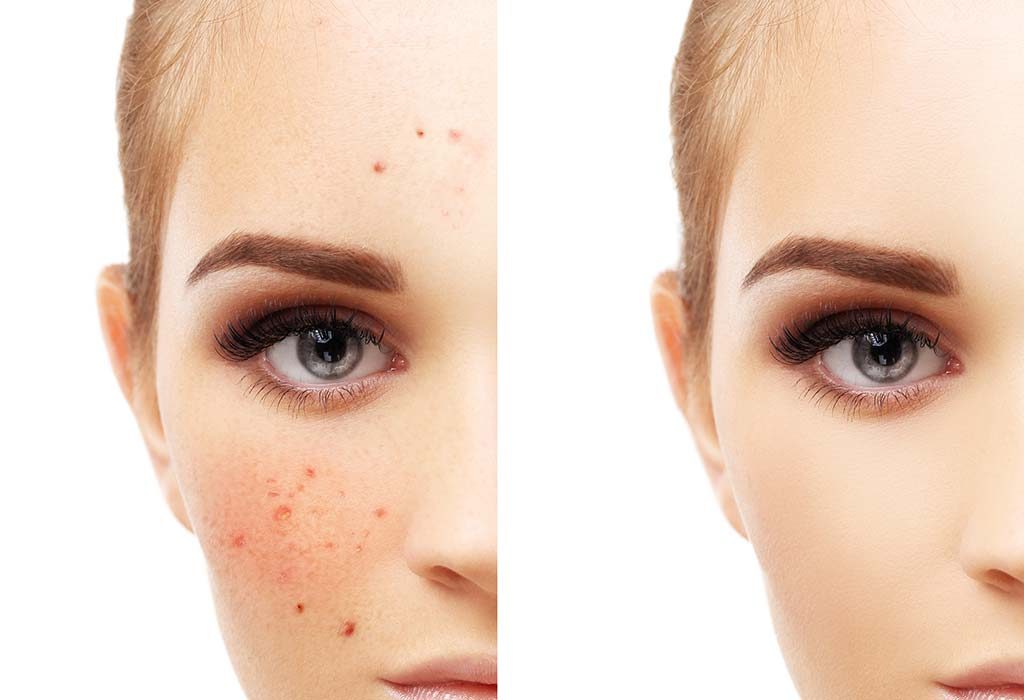Dark pigmentation on the face is a very common skin condition. There are many causes behind every hyperpigmentation. It ranges from genetic, allergic, environmental, autoimmune, hormonal, etc.
Following are the common manifestations:
- Melasma: It is common in darker skin types. Females are commonly affected. Dark patches are seen mainly on central face and cheeks. It can be due to UV light sensitivity, OC pills, Hormonal therapy, Thyroid disorder.
- Ashy Dermatosis: It is common in both sexes. It presents as asymptomatic Reddish dark pigmentation on the face, hands, and trunk. Exposure to certain drugs, chemicals, the radiocontrast medium can induce it.
3. Lichen Planus Pigmentosus: It is seen as bluish dark patches on the face and it can affect any parts of the body.
4. Riehl’s Melanosis: Also called as Pigmented contact dermatitis. It is due to contact of cosmetics and textiles and seen as reddish dark patches on applied areas on the face.
5. Poikiloderma of Civatte: it is seen in middle aged women. Cause being Photosensitive cosmetics exposure. It presents with dark patches, prominent red capillaries, and thinning of skin. It affects cheeks and chin area mainly.
6. Neus of Ota: it is genetic. It is seen bluish dark pigmentation on face since birth.
7. Periorbital Melanosis(Dark circles): it is very common which presents as a brown to black pigmentation around eyes. It can be due to genetic, allergic skin, swollen eyes, post-inflammatory, excessive strain on eyes, eye cosmetic uses.
8. Addison’s disease: It’s due to adrenal insufficiency(hormonal issues). Presents as diffuse dark pigmentation on face and body.
9. Exogenous Ochronosis: It is due to the chronic use of hydroquinone cream on the face for dark patches. It is seen as black, brown, and reddish reticulate pigmentation on face.
10. Acanthosis Nigricans: It is seen as velvety dark patches on face and skin folds of the body. It is associated with obesity, diabetes, and hormonal problems.
11. Photodermatitis (Tanning): Due to excessive continuous exposure direct sunlight for a long time, the dark patches on sun-exposed areas are seen.
12. Post-inflammatory hyperpigmentation: it is common after Acne(Pimples), seborrhoeic dermatitis, allergy or atopic (dry skin) dermatitis.
Management of Facial Hyperpigmentation s challenging and it includes the following:
- Confirmation of the cause of dark pigmentation is a must. Clinical examination, dermoscopy, and a skin biopsy is helpful.
- The use of proper sunscreen (SPF 30 to 50) according to skin types is mandatory.
- Lifestyle changes in case of obesity, light exposure, and eating habits.
- Avoiding provoking agents, cosmetic agents.
- Topical treatments with creams containing de-pigmenting agents.
- Cosmetic procedures like chemical peels, LASERs, Microdermabrasion, etc. are helpful in reducing pigmentation.


… [Trackback]
[…] Find More on that Topic: hairocraft.com/blog/facial-hyperpigmentation/ […]
… [Trackback]
[…] There you will find 32463 additional Info on that Topic: hairocraft.com/blog/facial-hyperpigmentation/ […]
… [Trackback]
[…] Read More on to that Topic: hairocraft.com/blog/facial-hyperpigmentation/ […]
… [Trackback]
[…] Find More Information here on that Topic: hairocraft.com/blog/facial-hyperpigmentation/ […]
… [Trackback]
[…] There you will find 83543 more Info to that Topic: hairocraft.com/blog/facial-hyperpigmentation/ […]
… [Trackback]
[…] Find More Information here on that Topic: hairocraft.com/blog/facial-hyperpigmentation/ […]
… [Trackback]
[…] Read More to that Topic: hairocraft.com/blog/facial-hyperpigmentation/ […]
… [Trackback]
[…] Find More on that Topic: hairocraft.com/blog/facial-hyperpigmentation/ […]
… [Trackback]
[…] Find More on on that Topic: hairocraft.com/blog/facial-hyperpigmentation/ […]
… [Trackback]
[…] Read More Information here to that Topic: hairocraft.com/blog/facial-hyperpigmentation/ […]
… [Trackback]
[…] Read More to that Topic: hairocraft.com/blog/facial-hyperpigmentation/ […]
… [Trackback]
[…] Here you can find 28021 more Information on that Topic: hairocraft.com/blog/facial-hyperpigmentation/ […]
… [Trackback]
[…] Read More Information here to that Topic: hairocraft.com/blog/facial-hyperpigmentation/ […]
… [Trackback]
[…] Information to that Topic: hairocraft.com/blog/facial-hyperpigmentation/ […]
… [Trackback]
[…] Information on that Topic: hairocraft.com/blog/facial-hyperpigmentation/ […]
… [Trackback]
[…] Information on that Topic: hairocraft.com/blog/facial-hyperpigmentation/ […]
… [Trackback]
[…] Find More on that Topic: hairocraft.com/blog/facial-hyperpigmentation/ […]
… [Trackback]
[…] There you will find 61644 additional Info to that Topic: hairocraft.com/blog/facial-hyperpigmentation/ […]
… [Trackback]
[…] Find More on that Topic: hairocraft.com/blog/facial-hyperpigmentation/ […]
… [Trackback]
[…] Here you will find 28171 more Info on that Topic: hairocraft.com/blog/facial-hyperpigmentation/ […]
… [Trackback]
[…] Find More on that Topic: hairocraft.com/blog/facial-hyperpigmentation/ […]
… [Trackback]
[…] Read More on that Topic: hairocraft.com/blog/facial-hyperpigmentation/ […]
… [Trackback]
[…] Read More Information here to that Topic: hairocraft.com/blog/facial-hyperpigmentation/ […]
… [Trackback]
[…] There you can find 50925 more Info to that Topic: hairocraft.com/blog/facial-hyperpigmentation/ […]
… [Trackback]
[…] Read More here on that Topic: hairocraft.com/blog/facial-hyperpigmentation/ […]
… [Trackback]
[…] Find More on that Topic: hairocraft.com/blog/facial-hyperpigmentation/ […]
… [Trackback]
[…] Find More on that Topic: hairocraft.com/blog/facial-hyperpigmentation/ […]
… [Trackback]
[…] Here you can find 75456 more Info on that Topic: hairocraft.com/blog/facial-hyperpigmentation/ […]
… [Trackback]
[…] Find More on on that Topic: hairocraft.com/blog/facial-hyperpigmentation/ […]
… [Trackback]
[…] Info to that Topic: hairocraft.com/blog/facial-hyperpigmentation/ […]
… [Trackback]
[…] Find More to that Topic: hairocraft.com/blog/facial-hyperpigmentation/ […]